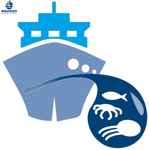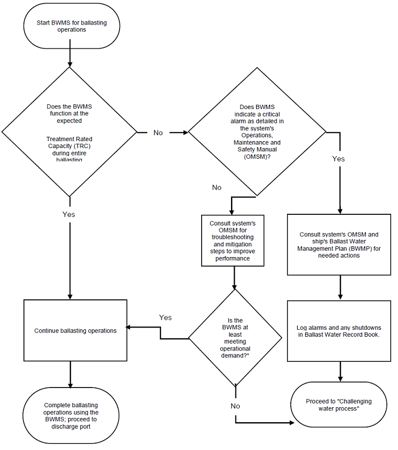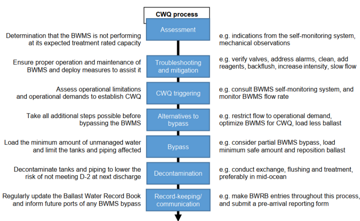 Interim guidance on the application of the BWM Convention to ships operating in Challenging Water Quality (CWQ) 29.07.2024 10:27
Interim guidance on the application of the BWM Convention to ships operating in Challenging Water Quality (CWQ) 29.07.2024 10:27IMO adopts the Interim guidance on the application of the BWM Convention to ships operating in challenging water quality.
The properly installed, operated and maintained type-approved ballast water management systems (BWMS) may effectively become temporarily inoperable in the various challenging water quality (CWQ) conditions that exist in a number of global ports and locations.
Challenging water quality (CWQ) refers to ambient uptake water having quality parameters (including but not limited to high total suspended solids, or turbidity) that cause a properly installed, maintained and operated type-approved BWMS to be temporarily inoperable due to an operational limitation or an inability to meet operational demand. However, temperature and salinity are not parameters that define CWQ.
The bypassing installed BWMS in CWQ, while sometimes necessary as a last resort to permit the continued operation of ports and ships, may contaminate ballast tanks and sediments with harmful aquatic organisms and pathogens that present substantial risks for the environment, human health, property and resources where ballast water is later discharged.
The Guidance includes recommended steps that can be taken to restore or maintain effective operation of a BWMS when operating in CWQ. These include steps to identify when a system is inoperable owing to CWQ; actions to avoid bypass of the system; steps to recover from bypass including steps to return to compliance with the D-2 discharge standard; and planning, record-keeping and communication principles.
When operating a BWMS in CWQ, encountering an operational limitation or experiencing a challenge in satisfying operational demand does not indicate a BWMS failure. A BWMS has warnings and alarms to protect the BWMS equipment and/or the ship and the triggering of these set points or flow reductions demonstrates proper BWMS operation as designed.
Process diagram 1: Assessment of BWMS operations:
Conceptual overview of the CWQ process:


